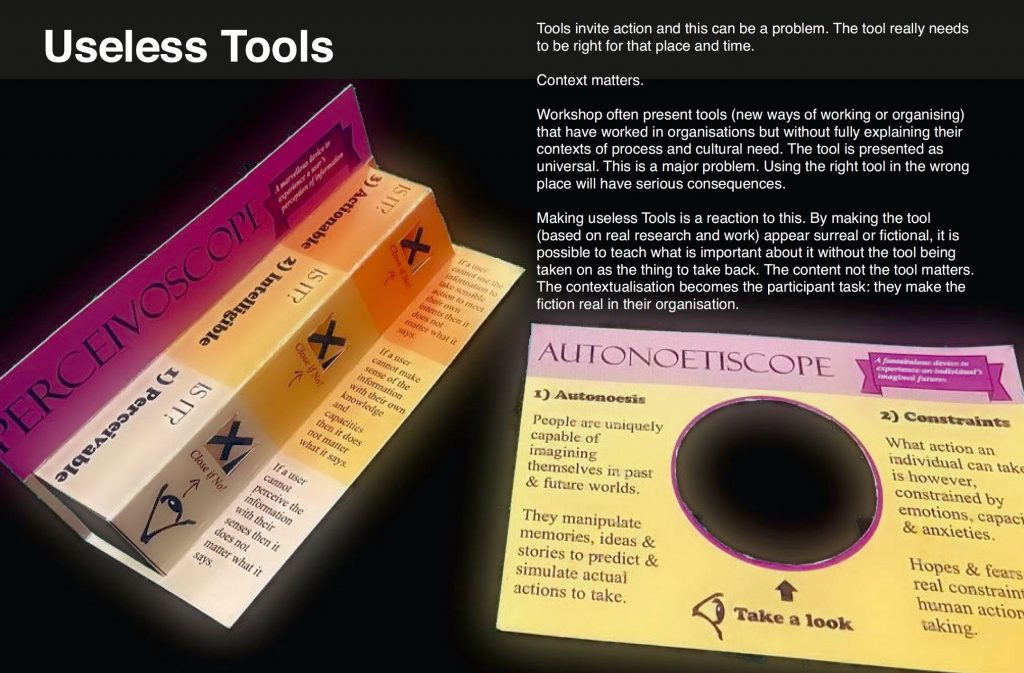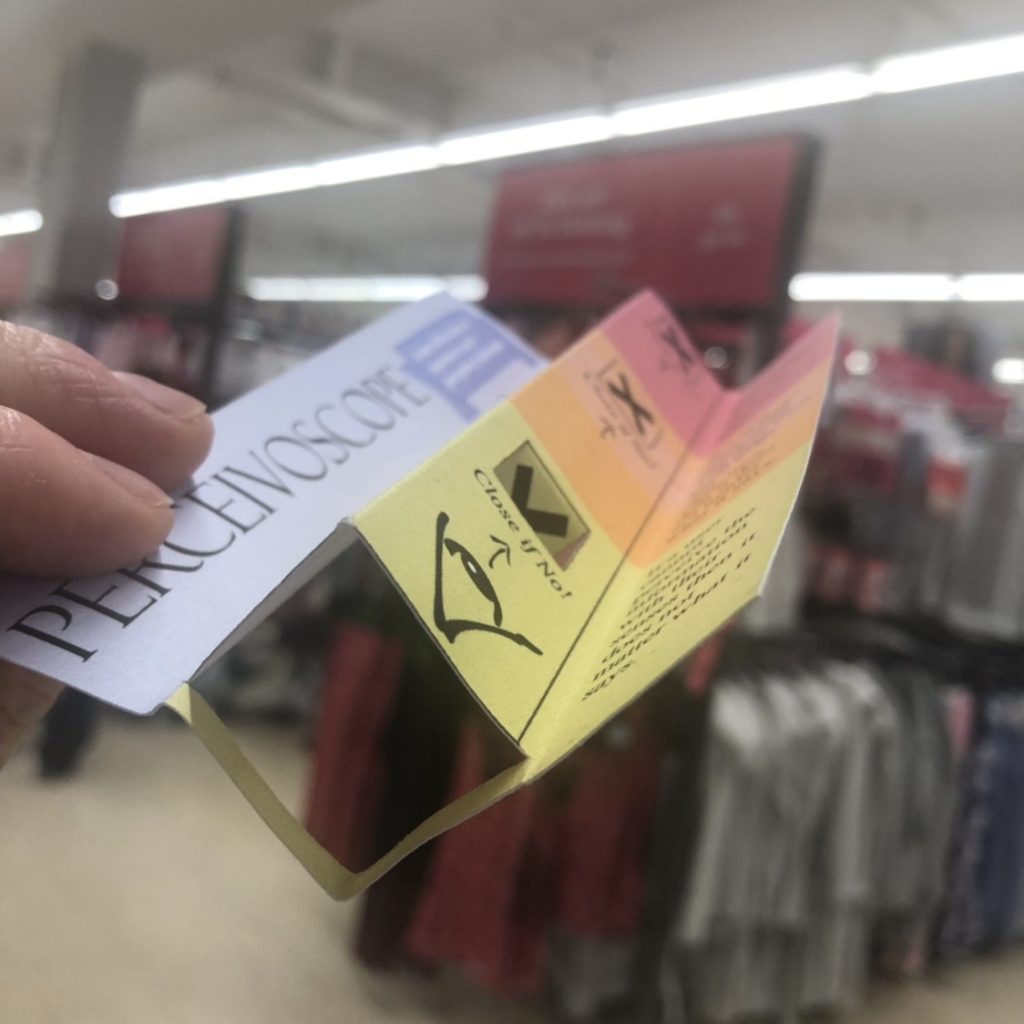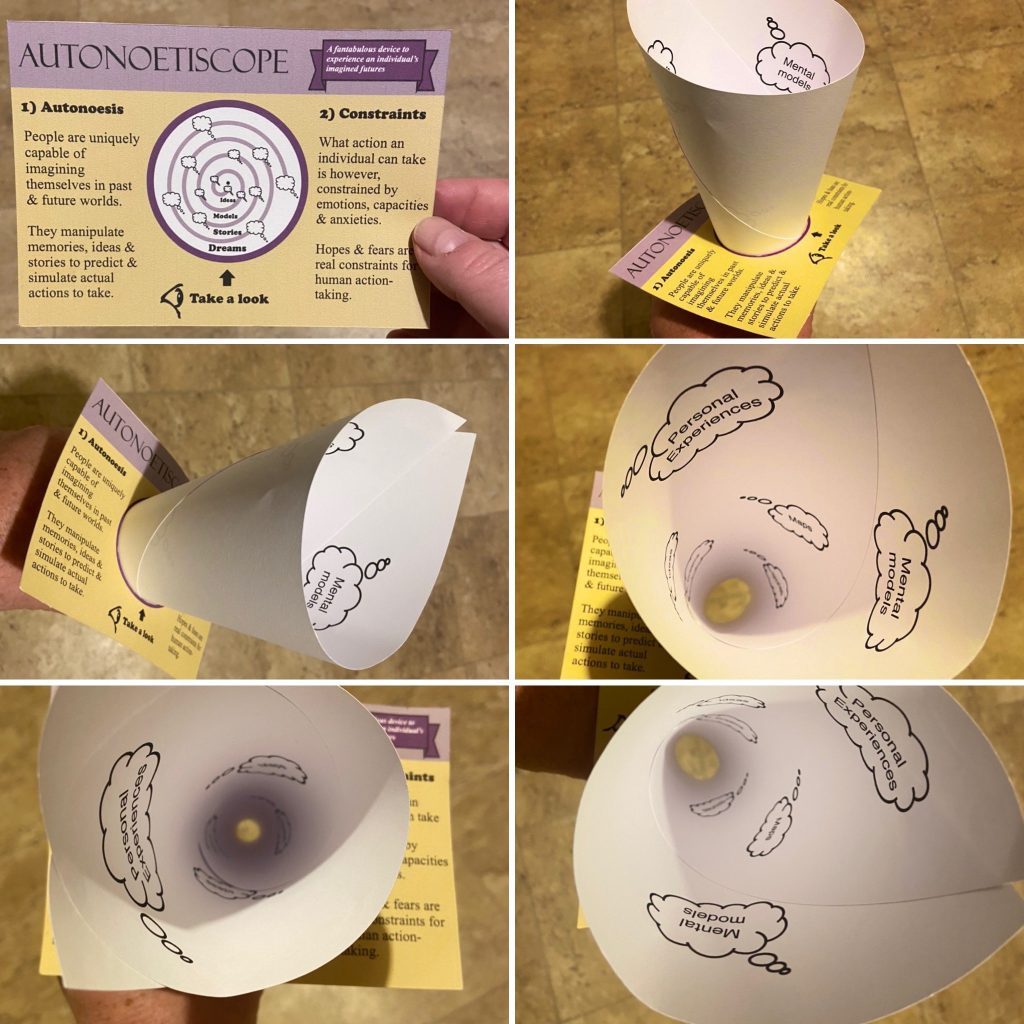
I’ve made a Perceivoscope. It’s a tool for understanding how information needs to be perceivable, intelligible and actionable by a user for the experience to be meaningful.
I’ve also made a Autonoetiscope. It’s seeing how anticipation and imagination frame and predict the experiences that people choose and have.
UX (User Experience) obsesses about tools.
I often run workshops where people hope to find a new tool to take away and use in their project or company.
Something they can learn to use immediately.
Something to do UX better, faster.
Yet this is problematic – the tools are too often a decoy from what needs to be learnt.
People not tools
User Experience is founded on being human-centered yet tools and processes seem to occupy discussions and workshops.
I want to talk about humans, imagination, perception and cognitive design as they’re all really interesting issues and we don’t have good answers to the problems (particularly in cognitive accessibility). I can show a space and some possible frameworks that might lead to solutions. If I said I know a definite tool then not merely would I be lying, I’d also be disrespectful of the workshop participants. I spend my time with people with much deeper knowledge than me: I hope to create places for them to explore problems and invent their own solutions that work in their contexts.
People are the point of UX.
People as users.
People as makers.
Designing useless tools

I often build props and tools for workshops.
For some workshops, they are useless.
Not in the sense that the ideas behind them are wrong but in the sense that you cannot use them at work.
The tools are nonsense.

The Perceivoscope is silly. The Autonoetiscope is foolish.
However, the ideas of both a cognitive accessibility framework and an anticipatory sense of UX design are true.
Understanding how people perceive, understand and use information is important. Using both ‘scopes during a workshop, with other participants, is useful. They create embodied and shared experiences of use. They trigger conversations and embed new ideas.
But what people need to take away are those rough ideas about new forms of UX and those experiences of working together.
The tools are useless outside of the workshop. The tools are discarded.
The ideas encountered and the conversations with people are central. They are remembered and kept.
The tools are nonsense but that’s their value.
People need the ideas to take them into their contexts and communities. Tools brought in from other contexts and other communities are dangerous: using them can cause damage and create exclusion.